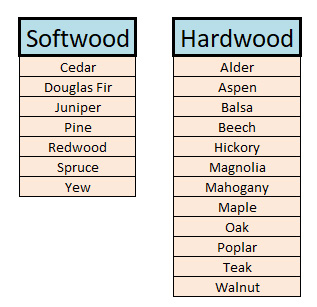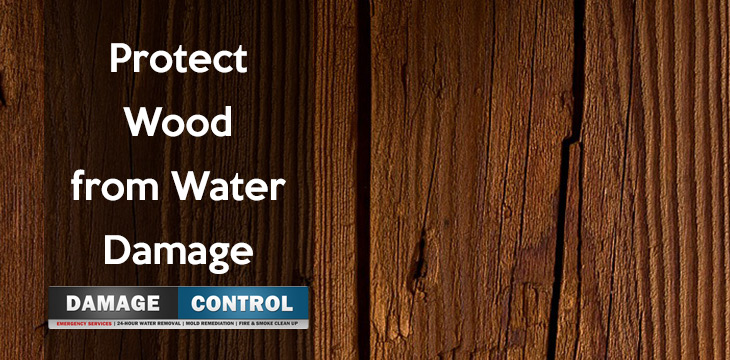Water damage is difficult to deal with in any scenario. Floods can be life-destroying, devastating everything that the water comes into contact with. It can be dangerous to go into floodwaters, considering you won’t be able to see the life-threatening things beneath it. It could have deep holes, sharp debris, and sickness-inducing microbes. It could be mixed with sewage water and other things. The time it takes to drain can be agonizing, but you have to wait until the flood lowers to go back into your home.
Restoration is a service that some may not consider when home-ruining floods. However, it is still possible to salvage some of your home's materials after a flood, particularly flooring.
Water damage can be caused by more than flooding.. Water pipes can burst in or under your home; a hole can be put through a roof. Humidity can even cause mold if you don’t have good ventilation. Ceilings can get water damaged, too, but repair's a bit easier.
Some surfaces are more porous than others, meaning there are tiny holes that can house microbes. Microbes are tiny, microscopic organisms that can grow bigger with the right circumstances. For example, mold and mildew can grow on and in wood more easily than glazed ceramic tile. There are different types of wood, each with an additional amount of porousness. Wood is one surface that must be protected. There are many ways you can do it, too.
What Are the Types of Wood?
When it comes to water damage, there are a few things to keep in mind. With the different types, water affects each one differently; some are even unsalvageable. It can sometimes be difficult to tell which types of wood you have in your home, but most wood can be protected from moisture either way. There are many different types, and each one falls under two categories: hardwood and softwood.
The terms “soft” and “hard” refer to the types of reproduction these trees go through. Hardwood seeds produce seeds covered with a shell or some other covering, whereas softwood seeds don’t have any covering and are left to survive. That means hard and soft woods have little difference other than their seeds! It depends on the specific type of wood, but these two categories don’t have many differences.
Hardwood vs. Softwood
Softwood is one of the more common woods for flooring, furniture, and other lumber materials. It makes up about 80% of the United States’ lumber usage. It is usually cheaper than its hardwood counterpart. Softwoods are like Spruce, Pine, Cedar, Fir, and Larch. There isn’t much difference between the woods besides mostly light and dark, with softwood usually being lighter.
Hardwood is denser since the trees grow slowly. However, that does not mean they are less quality than softwood. They do tend to be denser and, as such, have better water resistance than their softwood counterparts. That does not mean that it is less porous, though. Most hardwoods are darker and this category includes trees like Alder, Aspen, Balsa, Beech, and more.
Difference Between Manufactured Wood and Particle Board
It is very difficult to find true, solid wood items from retail stores or brand names. Most furniture and flooring are composed of a mixture of manufactured wood and solid wood. They’re made in the same wood, but are mostly made with scraps and other fibers that don’t come from the wood itself. It’s not exactly particle board, which is only compressed wood chips and resin, coated with veneer.
Particle wood is more of a filler than anything. It is a fine temporary solution to something, but it shouldn’t be a long-term solution. Manufactured wood is a lot stronger and can take the place of solid wood, considering that is what much of today’s furniture is made out of. It has greater structural strength, making it last a lot longer than particle board or pressboard.
Pressboard is also very weak when it comes to supporting things, compared to its other wooden counterparts. When exposed to water, it will soak it up like a sponge and will need to be thrown out either way. You can’t seal particle board very well, so going for the manufactured or solid woods will be better overall. Never settle for less when it comes to furniture, considering if it can be salvaged when water damage comes into play.
Protect Wood from Water Damage
No type of wood is safe from water damage if it is subjected to it. You can protect your wooden goods in multiple ways, so consider your options in a humid or flooded area. Many furniture and floors are made of wood, so it is important to know what you can do to protect your wood.
Unfinished wood is one of the easiest surfaces to become water-damaged. These unfinished surfaces are more porous than finished ones, considering they aren’t treated with sealant. This is a great time to stain or polish the wood to give it a beautiful color, but be sure to seal it up afterward. Otherwise, it will get damaged by water.
Waterproofing Wood
Since wood is porous, applying waterproof and sealant is easy. Oil-based sealants are a great way to cover up the pores in the wood, keeping water and other microbes out of the wood and keeping them safe from water damage. These sealants also keep water out of basement areas, so applying similar waterproofs to your wooden furniture, decks, or flooring can go a long way.
When planning to waterproof your surfaces, it is a good idea to use a cleaner to get rid of any mold, mildew, or dirt that may be on the wood. If you seal it with these microbes on it, it could ruin the wood very quickly. At this point, you can also remove the weathered waterproof covering if it needs it, as well as a stripper to pull off solid stains. Applying a stronger waterproof coating is a good idea.
Best Practices
It’s a good idea to get tinted waterproof sealants rather than clear ones, considering that sun exposure can cause wood to fade in color. It will look less and less like the wood you originally had, considering wood contains pigment, and it can be destroyed by the sun.
Never wait too long to apply finishing or waterproofing to wood. The longer you wait, the more problems you could have that are easily preventable. Wood can be beautiful, but it can also be sensitive to exposure. Light, moisture, and weather can ruin a beautiful piece of furniture or a deck, so never wait longer than you should.
Conclusion
Wood is beautiful if you want to put it in your house or outside in your garden or patio. A deck can tie a home together with the outside. Furniture and flooring can be given a beautiful, natural look if you choose it. It must all be protected from water, especially the outside wood. Furniture, flooring, and walls must be sealed properly to avoid water damage.
There are many sealants and waterproof liquids out there that can be applied to wood. It’s a good idea to look for tinted sealants, considering clear ones can lead to ultraviolet exposure from the sun. Either way, you should do it soon after you get the wood if it’s not finished. Of course, it’s a good idea to let it set for two to three weeks if it’s a brand-new surface. Don’t wait too long, though.

